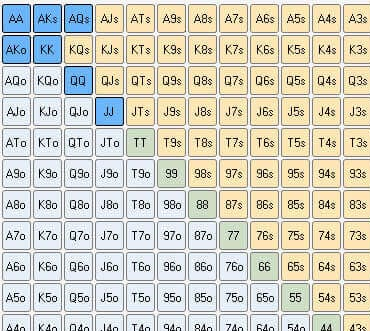The three bet in poker is an excellent option when playing the game. This can be used as a value bet or a semi-bluff bet.

Check-raise vs 3-bet
Check-raising is a popular poker strategy. It involves checking early in the betting round and then raising when the betting round comes back around. The main reason for check-raising is to get more money into the pot with a strong hand. A second reason for check-raising is to bluff.
You may have seen check-raising before, but you might not have been aware of the different ways it works. By learning how to use it, you can improve your game.
The key is to check-raise in the right way. You don’t want to scare your opponents away from the table with a check-raise, but you do want to make your hand look strong. To do this, you need to have a good read on your opponent’s hand.
There are a lot of reasons to check-raise. First, it can thin the field in a heads-up match. Second, it can build the pot in a multi-way hand. Third, it can give you more equity. Fourth, it can allow you to re-enter tournaments.
While check-raising is a great strategy, it’s not for everyone. If you are not confident that you have the best hand, it may not be worth it to risk your stack. Also, your opponent may fold his weaker hands if he sees your check-raise.
One of the best things about check-raising is that it is a great strategy for beginners. As long as you play it well, it’s a great way to get some extra money into the pot and bluff your way out of the competition.
Semi-bluff 3 bet
A poker semi-bluff is a light 3 bet which is aimed at getting the opponent to fold. While it can be effective, it does cost money. To help minimize that loss, take care when assessing your stack to pot ratio and evaluating how much you can actually bluff.
The first step to planning a semi-bluff is to identify what your opponent is likely to call with. In the example above, it’s most likely the player on the button with A 2. There’s also a chance that the player has a king in his opening range. However, he’s not likely to have any other pair or draws.
Next, calculate your odds of winning. For instance, if your opponent calls with a draw, there is a good chance that he has a diamond-suited card. This means he has a strong hand. If your opponent checks, then you’re likely to win with a flush or straight.
If your opponent is a loose-passive player, you should have more opportunities to catch him with a bluff. However, you should not bluff too often. You should instead be aggressive.
You can then use your bluff to extract value from your opponent’s weak hand. For example, if your opponent has four diamonds, you could check and then bet with a straight or flush.
Value three-bet
Value three-bet in poker is a term used to describe placing a bet on a hand that is likely to be a winner. Using this strategy can be a great way to take advantage of your opponent’s weak hands and increase your win rate. But, before you can use this tactic to its fullest potential, you need to understand what it is and how to do it right.
To make a value three-bet, you need to have the right range of hands. In other words, you need to know what you have and what your opponent has. For example, if you have A-K suited, you are likely to have a strong hand against three other players. However, you may not have a winning hand against two of them.
Similarly, if you have J8 suited, you can’t call a min 3-bet. Your opponents can be confused by this and you won’t get very far.
The best value three-bet is the one you use against a tight player. This is because you want to give the other players a chance to fold.
Despite the popularity of value three-bets, there are a few mistakes to avoid. First, you don’t want to overly aggressively call a min 3-bet. This can result in your pot being multiway, meaning you can end up losing the rest of the hand.